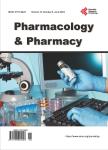Antidiabetic Potential of Carthamus oxycantha ***. Seeds in Alloxan Induced Diabetic Rats
Antidiabetic Potential of Carthamus oxycantha ***. Seeds in Alloxan Induced Diabetic Rats作者机构:Department of Pharmacology Faculty of Pharmacy The University of Lahore Lahore Pakistan Department of Pharmacology Faculty of Pharmacy Bahauddin Zakriya University Multan Pakistan
出 版 物:《Pharmacology & Pharmacy》 (药理与制药(英文))
年 卷 期:2022年第13卷第6期
页 面:189-198页
学科分类:1002[医学-临床医学] 100201[医学-内科学(含:心血管病、血液病、呼吸系病、消化系病、内分泌与代谢病、肾病、风湿病、传染病)] 10[医学]
主 题:Diabetes Mellitus Carthamus oxycantha Alloxan Glibenclamide AEECO
摘 要:Ethnopharmacological Relevance: Diabetes Mellitus is one of the most common disorders of metabolic abnormalities. It is characterized by hyperglycemia followed by abnormalities in insulin release, insulin work, or both. This persistent hyperglycemia is concerned with long-term complications, dysfunction and collapse of various organs, notoriously the kidneys, heart, nerves, blood vessels and eyes. The seeds of the Carthamus oxycantha have been used by the practitioners as a traditional remedy for diabetes mellitus in the rural areas of district Jhang as well as other areas of Pakistan. Aim of the Study: The purpose of the present study was to reveal the antidiabetic capability of seeds of Carthamus oxycantha in short-term and long-term studies. Materials and Methods: Aqueous ethanolic extract of seeds was prepared by a rotary evaporator. The antidiabetic activity of the seeds was assessed by using normoglycemic and glucose loaded rats. However, two kinds of studies i.e. short-term as well as long-term treatment were carried out in alloxan induced diabetic rats for the finalized both doses i.e. 50 mg/kg and 100 mg/kg. Blood samples were tested by an electrochemical technique using a glucometer. Results: The promising results were achieved for the antidiabetic potential of the ethanolic extract of seeds of Carthamus oxycantha at both of the doses i.e. 50 mg/kg and 100 mg/kg. The antihyperglycemic potential was also evaluated in normoglycemic and glucose loaded animals. Treatment with 100 mg/kg AEECO presented significant reduction (p 0.05) as well as highly significant reduction (p 0.01) in short term and long term study. Statistical data showed that AEECO presented comparable effects to that of the standard drug Glibenclamide at 0.5 mg/kg. Phytochemical studies of AEECO also disclosed the presence of flavonoids, resins, glycosides, steroids and alkaloids. In conclusion, the antidiabetic properties of AEECO may be attributed either due to the release of insulin or



